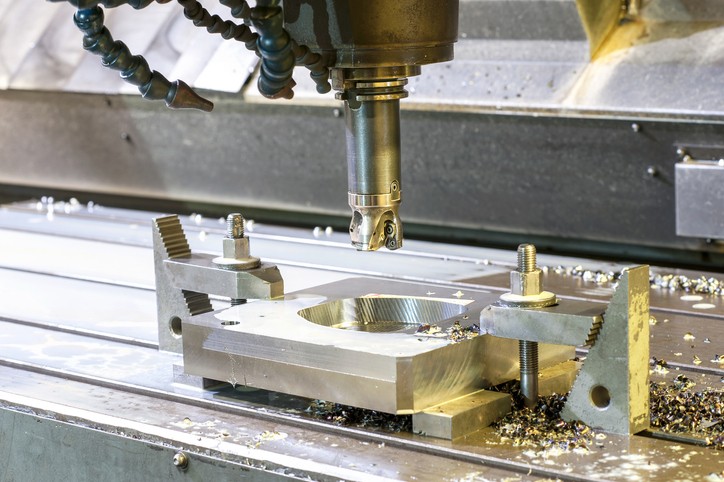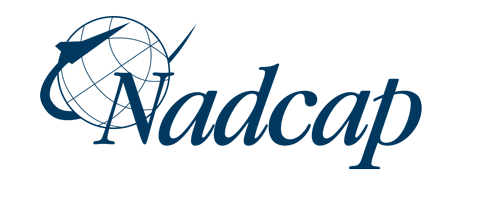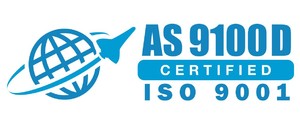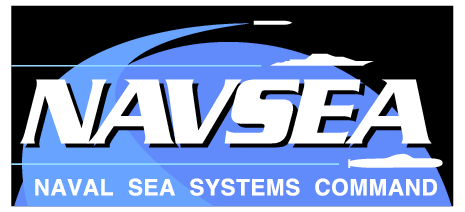Aluminum alloys make up the largest market share by volume for aerospace materials. Despite advances in composite materials, aluminum holds a significant share of the market.
Aluminum is ideal for aerospace applications for many reasons. It’s lightweight with a high strength-to-weight ratio. It has high corrosion resistance and many options for surface finishing.
Do you need aluminum machining services for your next project?
New Age Metal Fabricating in New Jersey is a leader in the manufacturing of precision machined parts for the aerospace industry. NAMF offers a full range of custom metal fabrication services, including aluminum machining.
Learn more about our processes and how we can turn your designs into finished products.
Precision CNC Machining for Aluminum
CNC machining is essential for getting the superior manufacturing results necessary in the aerospace industry. CNC machining uses computer software to direct the movement of tools and machinery. Computer-aided manufacturing (CAM) software generates the program to fabricate the physical part.
Aluminum is easy to machine. Working with aluminum has some challenges, though. The experienced operators at NAMF know the best aluminum machining tips so you get all the benefits of CNC technology.
Greater Accuracy and Consistency
Precision CNC machines are highly accurate. They operate without manual intervention. They minimize the potential for human errors.
CNC machines have excellent repeatability. CNC machining can repeat the process the same way over and over again. You get more consistent product quality.
You also have better quality control.
Faster Production
The advanced equipment in CNC machining can produce parts in less time. CNC machines have faster feed rates. They can operate 24/7 without compromising on quality.
More Complex Designs
Precision CNC machining lets you create aluminum parts with more complex designs. The use of software makes cutting contours and other intersecting elements easier. You can make parts that are much smaller than would be possible with a conventional machine.
Rapid Prototyping
CNC machining makes prototyping more efficient. CNC machines use 3D CAD models and CAM software to create parts. Engineers can create, test, and edit prototype designs more quickly.
You avoid investing in a design that doesn’t end up meeting your needs.
Vertical and Horizontal Aluminum Machining Solutions
NAMF offers both vertical and horizontal aluminum machining solutions. We have 18 vertical milling machines and two horizontal machines. This lets you take advantage of the strengths of both methods.
Advantages of Vertical Milling
On a vertical mill, the cutting head has a vertical alignment. The spindle moves up and down along the Z-axis.
Vertical mills have long, thin cutting tools. This makes them a good choice for applications including:
- Plunge cuts
- Drilling cuts
- Threading
- Grinding
- Single-side projects
Vertical mills provide increased visibility while operating because of the orientation. This can be useful on projects that need particular attention to detail.
Vertical mills allow for a wide variety of workpiece shape and size configurations.
Advantages of Horizontal Milling
On a horizontal mill, the spindle moves parallel to the ground. The cutting tools are shorter and thicker than on a vertical mill. Typical applications include:
- Groove cutting
- Slot cutting
- Gear cutting
- Side-oriented detail work
- Cutting multiple sides
Horizontal mills can give you a high output. They cut faster, and some machines can make multiple cuts simultaneously. Even at high speeds, horizontal mills are very precise and accurate.
They have a large capacity for bulky or heavy workpieces.
3-Axis, 4-Axis, and 5-Axis Machining
At NAMF, we have a range of state-of-the-art 3-axis, 4-axis, and 5-axis milling machines. The complexity and type of geometry your parts need determine the best type of aluminum CNC machine for the project.
The main difference between 3-axis, 4-axis, and 5-axis machines is the movement of the workpiece and the cutting tool relative to each other. The more complex the relationship is, the more complex the part can be.
3-Axis Machining
3-axis machining is the simplest type. The workpiece remains still while the cutting tool moves along the X-, Y-, and Z-axes. 3-axis machines are well-suited for creating 2D and 2.5D geometry.
3-axis machining is relatively basic. It can still create complex and practical components, though.
4-Axis Machining
For geometries that aren’t possible or cost-effective on a 3-axis machine, a 4-axis machine may be the solution. 4-axis machining adds the A-axis, which is rotation around the X-axis.
4-axis machines can have several different configurations. Typically, the spindle rotates around the Z-axis. The workpiece is mounted on the X-axis.
The addition of the A-axis means the machine can automatically flip the workpiece over. This allows for machining both sides of the part.
5-Axis Machining
5-axis machining allows for the fabrication of the most complex parts.
The cutting tool moves across the X-, Y-, and Z-axes. It can also rotate on the A-, B-, or C-axes. Depending on the machine, the rotation will use either the A- and C-axes or the B- and C-axes.
5-axis machining lets us approach the workpiece from any direction. We can machine complex shapes in a single setup.
Palletech Process Automation
Another example of the industry-leading technology we use at NAMF is our PALLETECH system. The software gives our shop managers better control over processes through:
- Complete monitoring of operations
- Managing part program files from anywhere on the network
- Tracking tool life and breakage
- Issuing repair or maintenance instructions to the shop floor
PALLETECH lets us optimize our machine utilization to give you a faster turnaround. We can accommodate last-minute orders without reorganizing other jobs. We maintain efficiency whether you need low- or high-volume production.
Nadcap Accreditation
NAMF has demonstrated its commitment to meeting and exceeding the rigorous standards of the aerospace industry. We’ve earned accreditation from the National Aerospace and Defense Contractors Accreditation Program (Nadcap).
Nadcap is a collaboration between aerospace experts from industry and government. The audits are more in-depth than general quality standards like ISO. They focus on industry-specific processes.
Nadcap accreditation shows that we have the specialized expertise necessary for aerospace manufacturing. Industry experts conduct an intensive technical assessment of compliance with customer requirements and industry standards. To maintain accreditation, we must pass an audit every year.
Upgrade Your Aluminum Machining with NAMF
Aluminum machining is a critical step in manufacturing many components for the aerospace industry. You can rely on NAMF for your precision CNC machining needs. We offer vertical and horizontal milling solutions with 3, 4, and 5 axes.
NAMF will put our cutting-edge manufacturing technologies and techniques to work to meet your unique needs. Contact us today and let’s get started.





